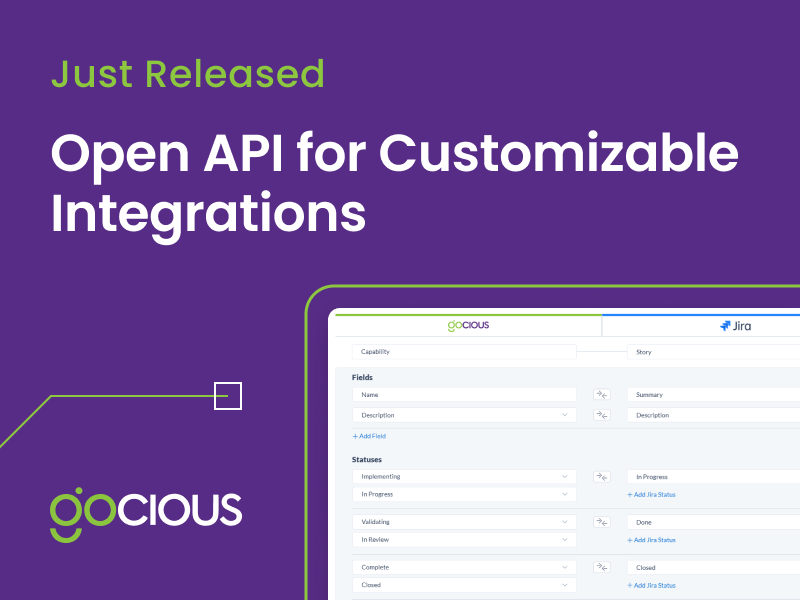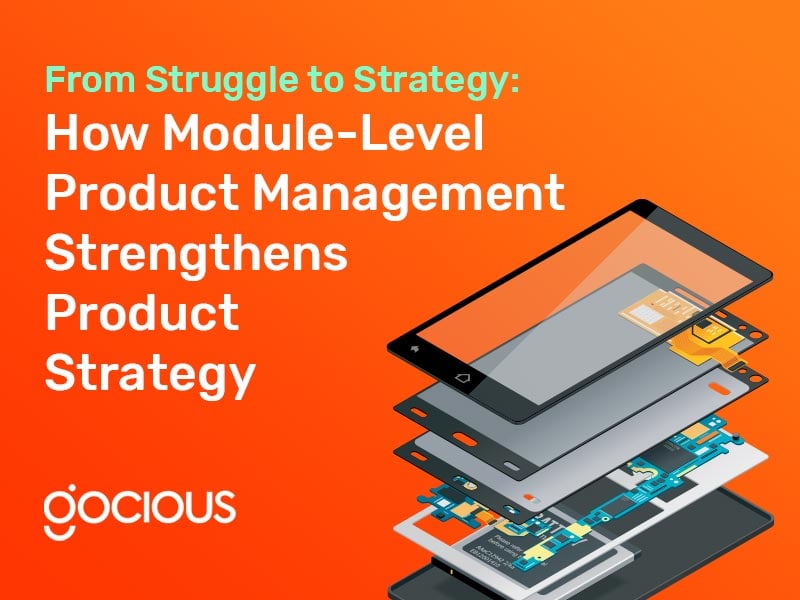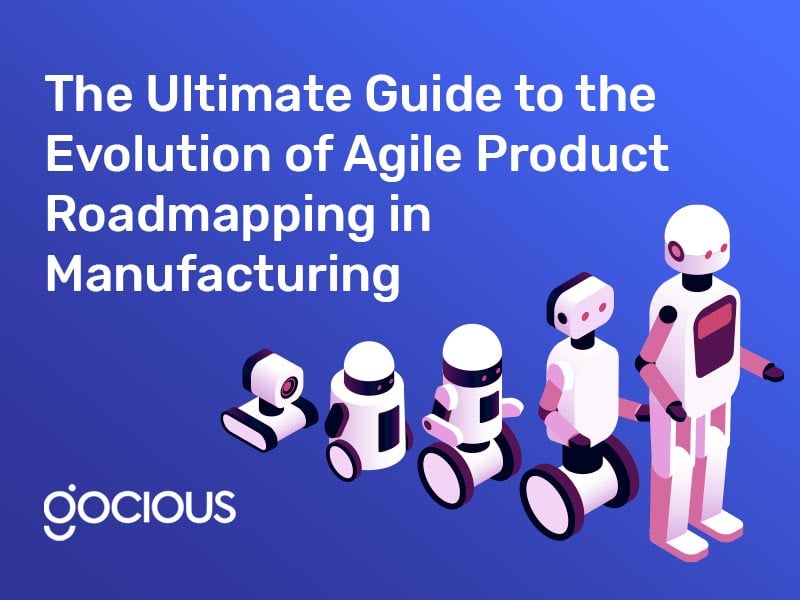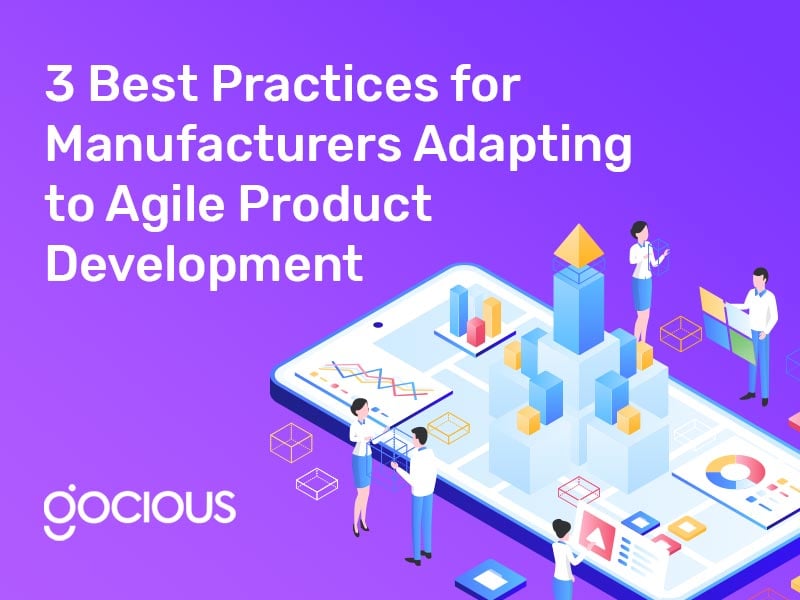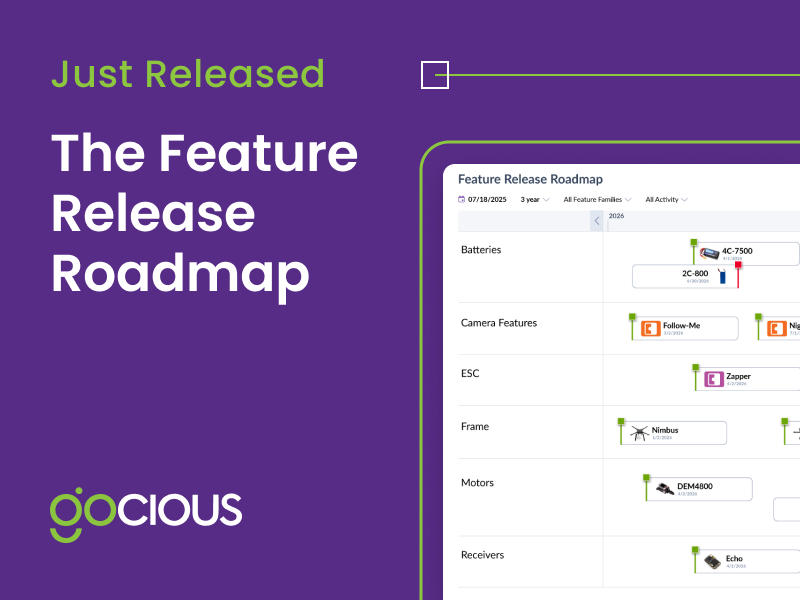
Subscribe to our blog
Ready to improve your roadmapping process?
Curious about how Gocious can help your manufacturing team transform its Product Lifecycle Management strategy? Let’s schedule a call to explore!
Product Management Articles
Maziar Adl

Recent Posts
Top 10 KPIs that Matter for Product Manufacturing
Key Performance Indicators (KPIs) are only useful when measured, tracked, and analyzed. While there are certain standard KPIs that most organizations will use, such as time to market and cost of development, the rest will depend on the company’s goals and the nature of its products.
10 Frequent Challenges Automotive Manufacturers Face with Product Roadmapping
In the dynamic landscape of automotive manufacturing, product roadmapping software is a crucial tool for innovation and success. However, it has its challenges. From rapid technological advancements to market demands, automotive manufacturers must navigate a complex web of factors to make successful products, and roadmaps can help make it happen.
From Struggle to Strategy: How Module-Level Product Management Strengthens Product Strategy
Managing products at the module level presents a unique set of challenges that require careful navigation and strategic planning. One of the top challenges lies in coordinating the production of modules, ensuring they meet quality standards, pricing objectives, and delivery timelines.
The Ultimate Guide to the Evolution of Agile Product Roadmapping in Manufacturing
The manufacturing process is complex in scope, strategy, and systems. While innovation can transform every process step from the manufacturing floor to the products themselves, it also adds to the complexity of physical product development. Products require the involvement of more stakeholders than before, bringing together many different opinions, timelines, roadmaps, and requirements.
Top Trends to Consider in Agile Product Manufacturing
The nature of a trend is that it's new, novel, and promoted across the industry, but is it worth implementing? The vast range of product complexity in manufacturing means that no two organizations will adopt the same process. Evaluating each trend and considering whether it's worthwhile for your company to test or ignore is important. Let's discuss some of the current trends in Agile product development for manufacturers of physical goods and whether they're worth considering for your teams.
3 Best Practices for Manufacturers Adapting to Agile Product Development
Agile product development may have originated in the software world, accelerating the speed at which digital products are developed, tested, launched, and improved, but this doesn't mean that Agile only works for software products. Many manufacturers have adopted agile methods or a hybrid approach for developing complex cyber-physical goods, with Tesla leading the way as an innovative and pioneering company.
How Manufacturers Can Leverage the Role of the Product Marketing Manager
When it comes to leadership in the manufacturing world, product marketers and product managers are like two peas in a pod. Both positions require a thorough understanding of the product and their ideal customer's preferences and pain points. The day-to-day of both positions requires strategic planning and cross-functional collaboration to drive customer success.
What Is a Platform Product Manager?
Most customers don’t realize the number of people behind the complex products in their lives. From the product owners and managers to the team leads to the skilled technical employees, it takes a large, cross-collaborative team to design and build complex products. One of those important roles is the platform product manager.
10 Ways Product Roadmaps Empower Manufacturing Leadership
Product roadmaps are essential tools to help manufacturers of all sizes navigate the ever-evolving landscape of innovation and development. The value that dynamic roadmaps deliver will depend on how product teams manage those roadmaps. Making regular updates and tracking key performance metrics (KPIs) is key to ensuring success across the entire product portfolio.
Elevate Your Strategy: Mastering the Art of Product Review Meetings for Peak Performance
Your calendar is full of meetings when you're in the product development world. As tedious as they may feel, many of those meetings are important for your organization. At the executive level, you may be required to give approval on a new product or additional funding or provide feedback on a product in development.
Charting a Path to Sustainability: Mastering ESG Goal Tracking on Your Product Roadmap
In recent years, the global conversation surrounding environmental, social, and governance (ESG) goals has gained significant traction. From corporate boardrooms to legislation to consumer demand, there is a growing interest in issues such as climate change, social inequality, and ethical business practices. But what exactly are ESG goals, why are they important, and how can we effectively track and manage them? In this article, we share some of the best practices for tracking these goals with exciting new features that allow you to monitor and measure your progress directly on your product roadmaps.
Visualizing Product Dependencies for Better Alignment
Modern product development has many moving pieces to oversee and align. The key to staying on top of product development is to use sophisticated product roadmapping tools that keep the relevant stakeholders up-to-date in real-time. A product roadmap management software that focuses on clear visuals and advanced filtering options creates transparency and alignment across the portfolio. Transparency is essential for many reasons, including informing executives on product progress, coordinating stakeholders on decision-making, and prioritizing ideas based on company goals.

